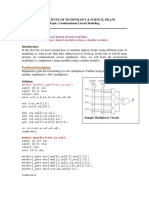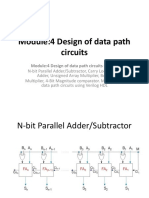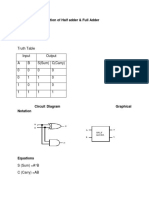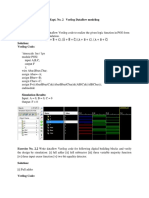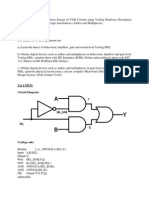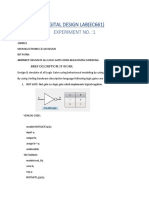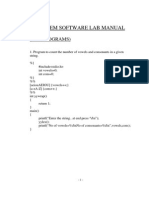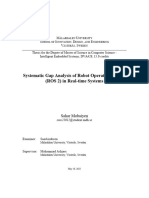0% found this document useful (0 votes)
46 views16 pagesDDCO Lab Solutions From 02-08
The document provides a series of experiments for a Verilog HDL course, detailing the design and simulation of various digital circuits including a 4-bit full adder, binary adder-subtractor, BCD adder, multiplexers, demultiplexers, and flip-flops. Each experiment includes Verilog code implementations and testbenches for verification. The document serves as a practical guide for students to understand and apply digital design concepts using Verilog.
Uploaded by
Kiran GCopyright
© © All Rights Reserved
We take content rights seriously. If you suspect this is your content, claim it here.
Available Formats
Download as PDF, TXT or read online on Scribd
0% found this document useful (0 votes)
46 views16 pagesDDCO Lab Solutions From 02-08
The document provides a series of experiments for a Verilog HDL course, detailing the design and simulation of various digital circuits including a 4-bit full adder, binary adder-subtractor, BCD adder, multiplexers, demultiplexers, and flip-flops. Each experiment includes Verilog code implementations and testbenches for verification. The document serves as a practical guide for students to understand and apply digital design concepts using Verilog.
Uploaded by
Kiran GCopyright
© © All Rights Reserved
We take content rights seriously. If you suspect this is your content, claim it here.
Available Formats
Download as PDF, TXT or read online on Scribd
/ 16
















